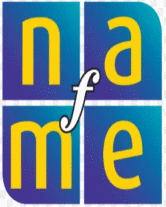A detailed introduction to the popular Mexican musical style
Introduce your students to mariachi music with this detailed overview of the history, traditions, and song forms of this popular musical style that originated in Mexico. Includes a list of books, recordings, and websites for further use and investigation.Preparing to Teach Mariachi Music
When teaching the mariachi music to a class, use the following guidelines:- Perform only the most traditional mariachi songs (do not perform arrangements of pop, rock, or other songs that are not in the Mexican tradition).
- Use only authentic instruments (do not substitute a string bass for the guitarrón or a guitar for the vihuela).
- Choose simple song forms when first learning to play mariachi music, preferably a ranchem or a son polka.
- Adhere strictly to the rhythmic patterns of the song forms.
- Make musicality and adherence to the mariachi style the most important goals.
- Limit the size of the ensemble so it does not grow too large.
- Tell students not to improvise when they forget their part; instead, they should do one of two things either not play or, in the case of the violinists, fake the bowing in the same direction as the rest of the section (violinists always bow in the same direction regardless, of the part they play).
- When in doubt, seek out performers of mariachi music for advice.
- Always keep a fun and relaxed atmosphere in the rehearsal (this is the mariachi tradition).
Over the years, the following standard terminology for the mariachi has developed:
- al bajon (down beat)
- primera (first part)
- segunda (second part)
- tercera (third part)
- que tono (what key is the piece to be performed in)
- pa bajo (down bow)
- pa arriba (up bow)
- mas redo (faster)
- mas despacio (slower)
- chamba (job or performance)
The performance of mariachi music also requires that the students perform a variety of song forms (the cancion ranchera, bolero, son, and the huapango) as well as perform on instruments, sing solo songs, and sing in a chorus. It is vital to keep in mind that mariachi performers must be able to sing, regardless of the instrument they play in the ensemble. If a student is too shy or has not developed a voice for singing, he or she should still be encouraged to sing as a chorus singer within the group. Musicians in the mariachi band need to be taught from the beginning that singing is a vital and important part of participating in the ensemble.
Resources
Book/Recording Set
Harpole, Patricia W. Los Mariachis! An Introduction to Mexican Mariachi Music. Mark Fogelquist, Director El Mariachi Uclatlan. Danbury, CT: World Music Press (Judith Cook Tucker, Publisher, Box 2565, Danbury, CT 06813; 203-748-1131), 1991.
Book
Rafael, Hermes. Origen e Historia del Mariachi. Segunda Edicion: Editorial Katun, S.A. (Republica de Colombia 6) primer piso, Centro, Telephone: 529-38-68), 1983.
Recordings
El Mariachi. Mariachi Vargas de Tecalitlan. Polydor/Polygram MCRN 1082-839-332-1. Fiesta en Jalisco. Mariachi Vargas de Tecalitlan. RCA Victor CSM-1863. Ruben Fuentes: 50 Anos con su Musicay Arreglos para el Mejor Mariachi delMundo, Mariachi Vargas de Tecalitan. Mercury CD 314 526 223-2.
Sources of Books and Music
Alla
102 W. San Francisco St., Suite 20
Santa Fe, New Mexico 87501
505-988-3416
La Casa Del Libro
2802 E. 22nd Street
Tucson, Arizona 85713
520-881-2489
Musica Latina
4302 S. 6th Ave.
Tucson, Arizona 85714
520-746-9194
Yolys Music Shop
3366 S. 6th Ave.
Tucson, Arizona 85713
520-620-0830
Clinicians and Performers
William Faulkner
PO Box 6074
Carmel, CA 93921
408-625-2310
William J. Gradante
6416 Waverly Way
Fort Worth, Texas 76116
817-737-7296
Arranger
Juan de Dios Noperi
431 W. 26th Street
Tucson, Arizona 85713
520-882-4538
Excerpted from Making Connections: Multicultural Music and the National Standards.
Integrating Hispanic Music Throughout Curriculum
Mexican American Mariachi Music
Traditional Circle Game from Puerto Rico
Making a Maraca
Making Panpipes












